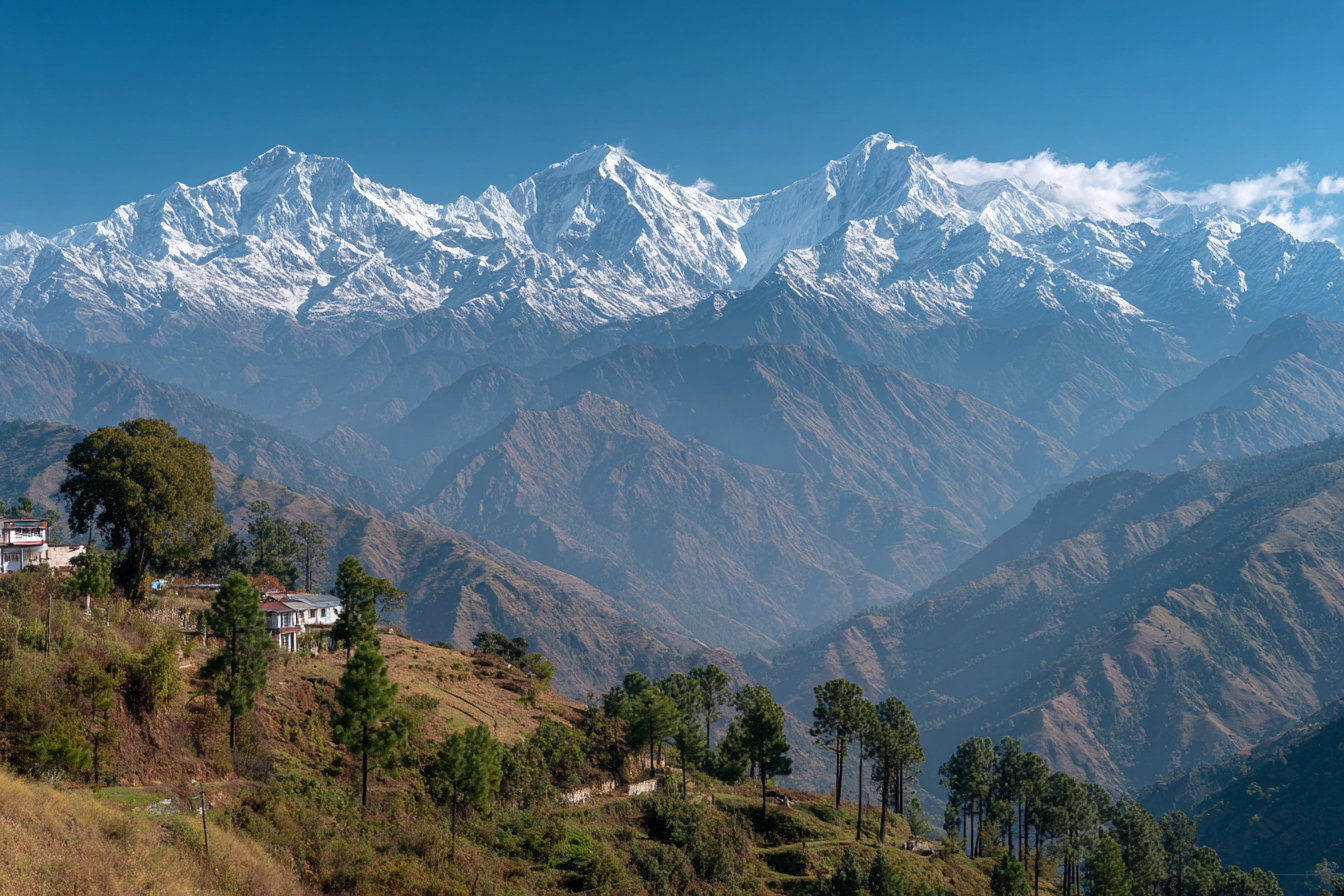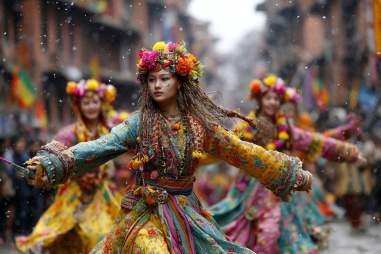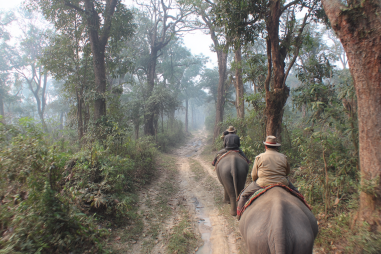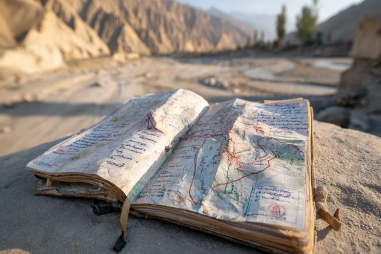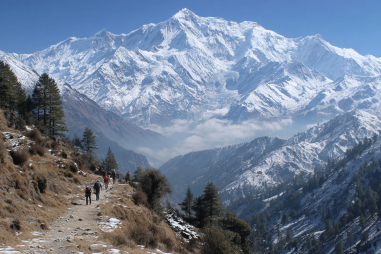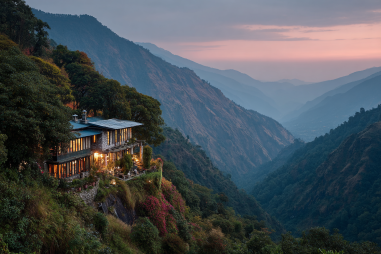Nestled in the scenic hills of Nepal, Nagarkot is a beloved destination for travelers seeking spectacular mountain views and a serene escape from bustling city life. Its weather and climate greatly influence the experience, with each season offering unique charms. Understanding Nagarkot’s weather patterns can help you pick the perfect time to visit, whether you aim to catch a breathtaking sunrise over the Himalayas or enjoy a peaceful retreat during the quieter rainy months. In this guide, we’ll explore Nagarkot’s climate throughout the year, the best times for outdoor activities, essential packing tips, and weather-related travel advice to make your trip seamless and enjoyable.
General Climate Description of Nagarkot
Nagarkot is located at an elevation of approximately 2,175 meters (7,136 feet) in the Kathmandu Valley’s periphery, which gives it a mild temperate climate. The area benefits from fresh mountain air and experiences four distinct seasons throughout the year: spring, summer (including the monsoon), autumn, and winter. Nagarkot’s climate is influenced by the Himalayan mountain range, which means temperatures typically remain moderate but can vary from pleasantly warm days to cool, chilly nights. The altitude also contributes to relatively lower humidity levels, especially outside the monsoon season, making it a comfortable destination for most visitors.
Seasonal Weather Breakdown
Spring (March to May)
Spring in Nagarkot is one of the most delightful times of the year. Temperatures start to warm up gradually, with daytime highs ranging from 15°C to 20°C (59°F to 68°F), while nights remain cool but comfortable. This season witnesses blossoming rhododendrons and abundant greenery, adding vibrant colors to the landscape. Skies are often clear or partly cloudy, providing excellent visibility for mountain vistas. Spring is ideal for trekking, sightseeing, and hiking excursions.
Summer (June to August)
Summer in Nagarkot overlaps with the monsoon season, which brings frequent but usually short bursts of heavy rainfall. Temperatures during summer hover between 17°C and 23°C (63°F and 73°F). The monsoon transforms the region into a lush, green paradise, with water streams swelling and flowers blooming. However, strong rains and foggy conditions can sometimes limit clear mountain views and restrict outdoor activities. Travelers who enjoy tranquil, rain-soaked landscapes and fewer tourists may find this season appealing.
Autumn (September to November)
Autumn is considered the best season to visit Nagarkot for clear skies and stable weather. After the monsoon rains, the air is fresh and crisp with excellent visibility of the Himalayan range, including iconic peaks like Mount Everest. Temperatures during autumn range from 12°C to 20°C (54°F to 68°F), making the weather neither too hot nor too cold. The vibrant fall foliage and clean mountain air attract hikers, photographers, and nature lovers alike.
Winter (December to February)
Winter brings cooler temperatures, especially in the mornings and evenings, with daytime highs averaging between 8°C and 14°C (46°F to 57°F) and nighttime lows occasionally dipping near freezing. Snowfall is rare in Nagarkot itself but common in the higher mountains nearby. The skies can be very clear on cold days, offering some breathtaking views, although mornings may start foggy or misty. Winter is quieter in terms of visitor numbers, perfect for those seeking solitude and crisp, fresh air.
Average Temperature and Rainfall
Nagarkot’s average temperature throughout the year ranges from 8°C (46°F) to 23°C (73°F) depending on the season. Rainfall is mostly confined to the monsoon months, June, July, and August, when the area experiences the majority of its annual precipitation. During these months, rainfall can total from 300 mm to over 600 mm (12 to 24 inches), often falling in daily heavy showers. The rest of the year is relatively dry, with spring and autumn being particularly pleasant in terms of both temperature and rainfall.
Best Months to Visit Nagarkot
The ideal times to plan your visit are during the spring (March to May) and autumn (September to November) seasons. These months provide the best weather conditions, combining moderate temperatures with clear skies and minimal rainfall. For travelers eager to capture sunrise panoramas of the Himalayas without interruption, Nagarkot during autumn is often considered perfect. Those who prefer blooming flowers and warm, tranquil afternoons will find spring equally impressive.
If you don’t mind occasional rains and wish to experience Nagarkot’s lush green period with fewer crowds, the monsoon season can be a good choice. Conversely, winter welcomes visitors who enjoy cool weather and a quieter atmosphere, though packing warmer clothing becomes essential.
How Weather Affects Outdoor Activities
The weather in Nagarkot plays a significant role in the kind of activities you can comfortably enjoy. Hiking and trekking are popular year-round, but the best conditions occur when the trails are dry and visibility is high. This is why spring and autumn are favored, as rainfall is minimal and the days are relatively clear.
During the monsoon, trails can become slippery and muddy, making hikes more challenging and sometimes unsafe. Many travelers may opt instead for shorter walks or simply savor indoor relaxation with views from their lodges amid the rain. Winter’s chilly weather is good for walking but requires adequate clothing to stay warm, especially in the early mornings or late evenings.
Birdwatching enthusiasts will also find spring and autumn beneficial as migratory species frequent the area. Photography is often best on crisp, clear days found in autumn and spring when the mountain ranges stand out sharply against the sky.
Packing Considerations Based on Season
Packing wisely makes a huge difference in enjoying your time in Nagarkot, given the fluctuations in temperature and weather conditions:
- Spring and Autumn: Lightweight layers, a warm jacket for early mornings and nights, comfortable hiking shoes, sunglasses, and sunscreen are recommended.
- Summer/Monsoon: A reliable waterproof jacket or poncho, quick-dry clothing, waterproof footwear, and an umbrella will help combat the rain. Mosquito repellent is also a good idea.
- Winter: Warm jackets, thermal layers, gloves, hats, and scarves are essential to stay comfortable. Sturdy shoes that can handle potentially damp conditions are helpful.
Weather-Related Travel Tips
- Check Weather Forecasts: Before traveling, always check recent weather updates for Nagarkot to prepare for sudden changes, especially during monsoon.
- Altitude Acclimatization: Take your time adjusting to the higher elevation by staying hydrated and avoiding overexertion during your first day.
- Plan Early Activities: Mountain views are often clearest early in the morning, so consider starting your hikes or viewpoint visits around sunrise for the best experience.
- Backup Plans: On rainy or foggy days, have indoor or alternative activities planned, like visiting local villages, spas, or cultural spots.
- Stay Flexible: Weather in mountainous regions can be unpredictable, so keep your itinerary adaptable.
Timing Your Nagarkot Trip
Choosing when to visit Nagarkot depends largely on what you want from your experience. If your goal is to indulge in panoramic mountain views and enjoy pleasant trekking weather, aim for spring or autumn for the clearest and most comfortable conditions nationwide. Those who don’t mind embracing the monsoon rains will find the landscape refreshed and vivid, plus fewer tourists. Meanwhile, winter offers an offbeat charm with its cooler temperatures and peaceful surroundings.
Ultimately, Nagarkot’s weather and climate provide a distinct atmosphere every season, allowing every visitor to find something special. By knowing what to expect and planning accordingly, you can maximize the joy and beauty of your visit to this breathtaking Himalayan hill station.

